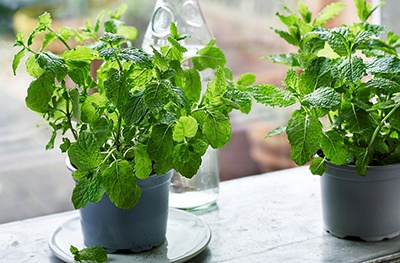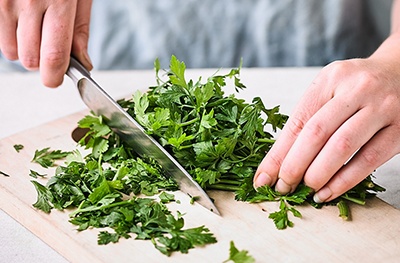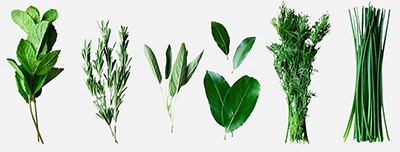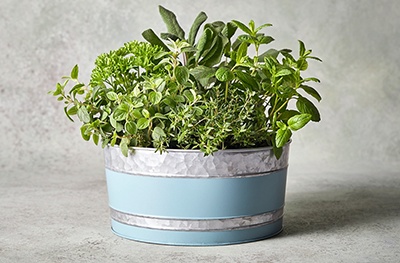How to Start a Kitchen Herb Garden

GROW HERBS AND USE THEM IN COOKING WITH THIS BEGINNER'S GUIDE
Tending your own herbs can be a mood-boosting experience. In early 2019, the NHS officially embraced ‘social prescribing’ as a way of tackling loneliness and improving mental health, with gardening one of the most common activities. Many studies have found that it boosts self-esteem, improves social functioning and reduces stress.
GET GROWING IN 3 STEPS

step 2
Sow annual herbs from seed, or buy baby plants and replant into larger pots. Most herbs come from warm, dry climates, so only water the pots when the compost feels dry. There’s no need to feed them, either

step 3
Snip off leaves and stems with scissors when you need them. Remove the leaves at the tips first, to encourage more side-shoots and new growth. Once established you can use larger quantities: chop leaves and stalks on a board with a sharp knife

INTRODUCE HERBS TO YOUR COOKING
In the kitchen, finish dishes with a scattering of chopped stems and leaves rather than relying on salt, and try using the herb sweet cicely instead of sugar when cooking summer fruits. Stews, salsas and soups come to life with a sprinkling of fresh herbs, while annuals such as parsley and coriander can be chopped and frozen for later. The leaves of perennials, such as lemon verbena and sage, are easily dried: simply snip off a few stems, pop them upside-down in a paper bag with a few holes, and hang them in a warm, airy room for two weeks before storing in a jar
Love your leftovers:
how to store herbs to use later
- Soft herbs like parsley, coriander, basil and mint are delicate and best used raw to finish dishes. The stalks have lots of flavour, so use those too
- To keep herbs fresher for longer, wrap in damp kitchen paper, put in a food bag and store in the fridge. Alternatively, pick the leaves and chop the stalks finely, dry them on kitchen paper and store in freezer bags or ice cube trays. They will last for three months and can be used in many ways
- Mix finely chopped herbs into salted butter, shape into a log and wrap in baking parchment. Chill or freeze
- Make pesto by swapping traditional basil for parsley, coriander or mint - or even a combination of these - before pulsing briefly with pine nuts, garlic (optional), parmesan and extra virgin olive oil. Adjust amounts to your taste, adding lemon zest or juice if needed
- Create a dressing with finely chopped herbs mixed with three parts rapeseed or extra virgin olive oil and one part lemon juice or vinegar. Add Dijon mustard to taste and season well before whisking together
6 FLAVOURS AT A GLANCE
1. Sage (Salvia officinalis)
Create a gargle to soothe a sore throat by mixing sage tea with a little cider vinegar. The leaves also help in the digestion of rich, fatty meats
2. Lemon verbena (Aloysia citrodora)
Use the lemon-scented leaves to flavour oils, vinegars, desserts and cakes, or to make a soothing herbal tea
3. Basil (Ocimum basilicum)
The perfect partner to tomatoes and mozzarella, and heavenly when used to make fresh pesto
4. Parsely (Petroselinum)
Parsley is a source of iron and vitamin C, and a natural breath freshener. The flat leaf variety is popular in tabbouleh
5. Peppermint (Mentha x piperita)
Used for centuries to aid digestion. Infuse a handful in boiling water for 10-15 minutes and drink after meals or before bed. Tasty chopped into potato salad or served with watermelon and feta
6. Thyme (Thymus)
Rich in essential oils, the leaves can be chewed, infused or cooked in marinades, soups and stews. Perfect with fish and chicken



